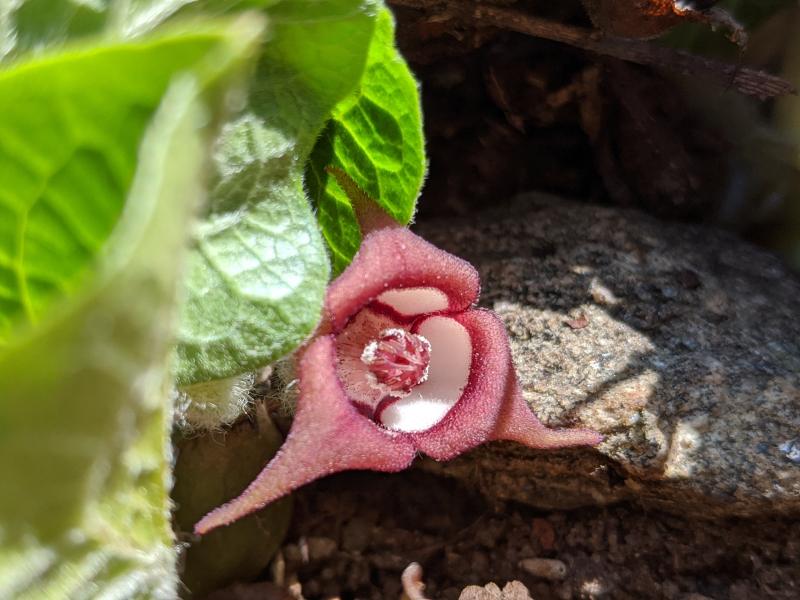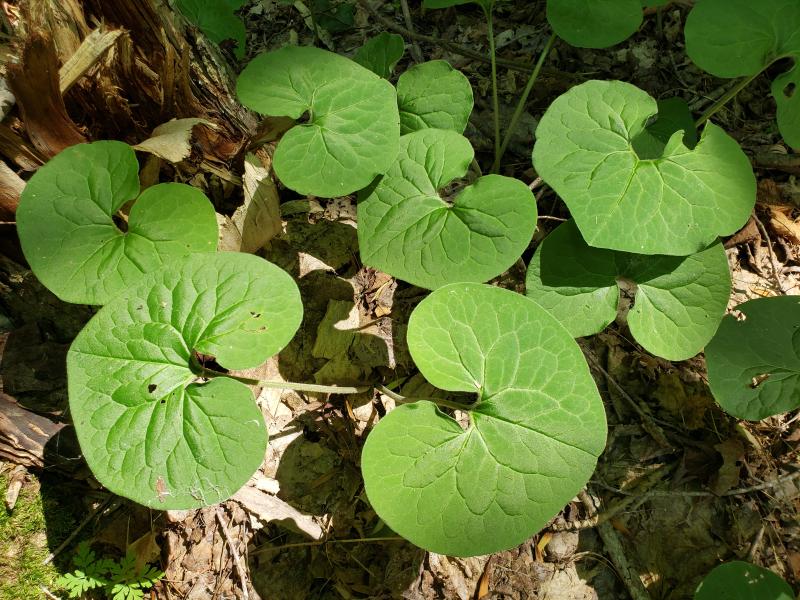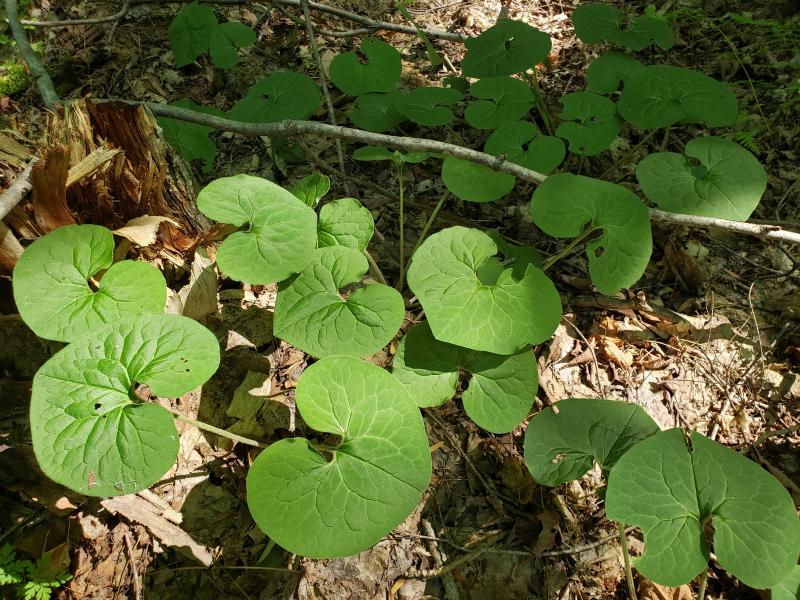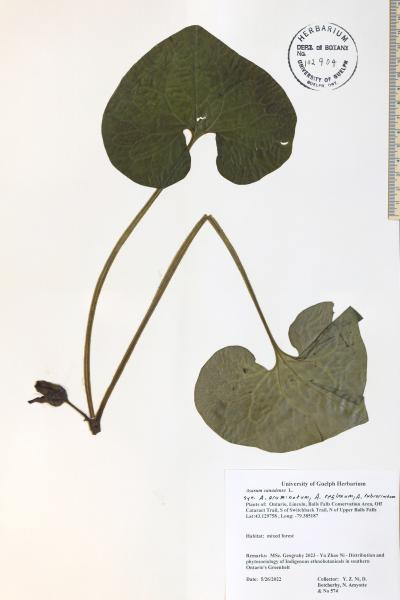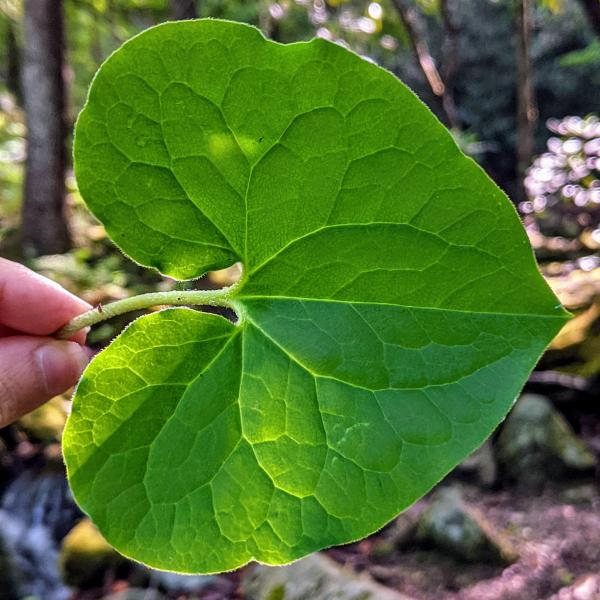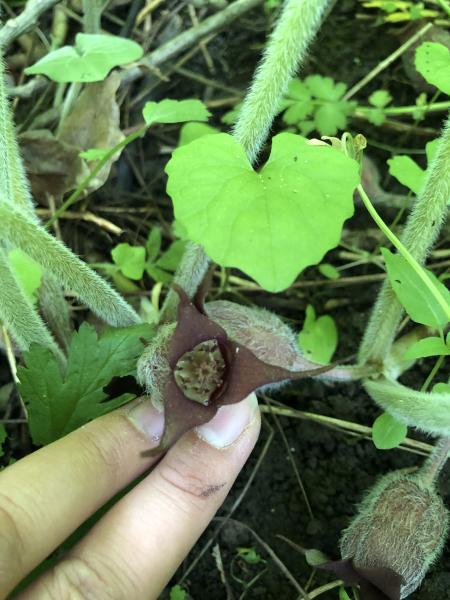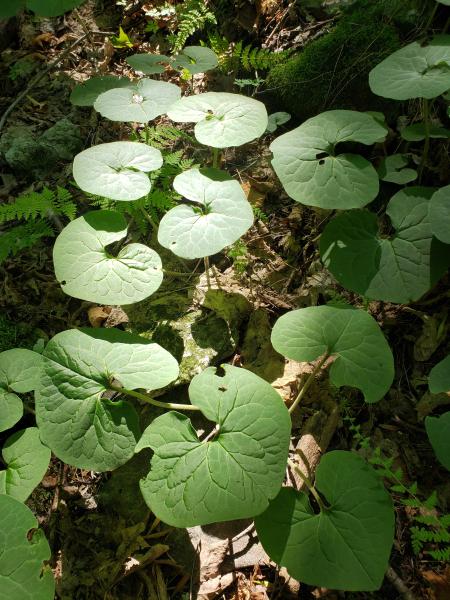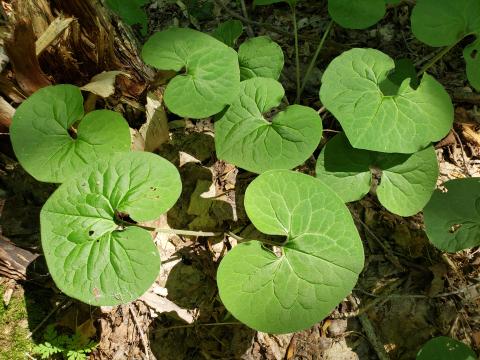
Names and Their Meanings
Wild Ginger - Asarum canadense
Wild Ginger
Description
Wild ginger is one of the herbaceous spring ephemeral plants that emerge early, along with mayapple, trillium, trout lily, bloodroot, hepaticas, and jack in the pulpit. It is a perennial low growing herb without aerial stems. The leaves emerge from rhizomes in sub-opposite pairs. Wild ginger’s leaves are uniquely heart-shaped to kidney shaped, with deeply cleft bases and pointed tips, apical on the stalk, and the undersides finely hairy. The leaves sit flat, perpendicular to the ground and sky, and glisten in the sunlight. The red-brown flowers are solitary, arising between a pair of leaves, uniquely placed at the base of the plant, by the ground, and flowering from March to July. Wild ginger likes rich, loamy soils, and grows in moist understories of deciduous and mixed forests.
Conservation Status
S5 (Secure) in Ontario
Uses
Wild ginger is used extensively in Haudenosaunee and Anishinaabe medicine, ceremony, and even as a spice/ for flavor. Indigenous peoples of the Great Lakes region widely use this plant for flavor in meat dishes and other foods (Huron Smith, in Erichsen-Brown, Densmore), as a digestive/ for indigestion. The roots have been and still are chewed or used in a tea as protection medicine; as a preventative and treatment for colds, fevers, and sore throats; as an expectorant; for menstrual cramps; as a calmative for children’s convulsions and for nervous and heart conditions; to promote sweating; and the fresh roots as an antimicrobial and antibacterial poultice for wounds (Parker, Jeness, Rousseau in Erichsen-Brown; Densmore; Herron; Pyke-Thompson). Asarum canadense is a medicine that is widely used at Six Nations of the Grand River and throughout the Great Lakes and Saint Lawrence for colds and spiritual protection. The carpets of Wild Ginger on the escarpments throughout Haudenosaunee and Anishinaabe homeland, and the meanings of each name in Kanyen'kéha and Anishinaabemowin, match the extent to which this is a cultural keystone species for ceremony, medicine, food, all three of which are also interchangeable purposes, too.
During the Covid-19 pandemic, Elder Brian Peltier, cultural and linguistic educator from Wiikwemkoong, and advisor on this project, described Wild Ginger as one of the medicines to combine with pine and chaga in a tea, for treating the symptoms of Covid-19, along with skunk oil as a rub for the chest and soles of the feet.
Alyssa General, Kanyen'kéha culture and language educator and advisor to this project, describes Wild Ginger as a cleanser:
For our people, we harvest the rhizomes. You can brew the rhizomes into a tea and it's a really good expectorant for removing phlegm from your lungs when you're sick. You can also dry it and chew on it. It was often used also as a deodorant and shampoo. A lot of people in the territory harvest it as a cold medicine, actually. One interesting thing too is it has such antibacterial properties it was often used for handwashing. I was taught it was more of a protection thing, but it's more of like to clean yourself, almost like sanitizing before you do certain things. Realizing that was really, really neat.
Wild ginger is harvested in the fall, after the plant has gone through its reproductive cycle. Because the source of its medicine and its reproduction is in the rootstock, it is not recommended to wild harvest this plant, except in small amounts for traditional and ceremonial purposes. Otherwise, our recommendation is to plant and grow Wild Ginger for ethnobotanical purposes.
